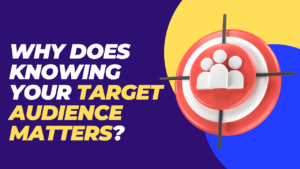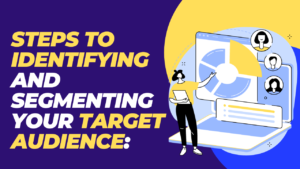Knowing Your Audience: The Key to Sales Success
As a business owner, one lesson has been crystal clear – understanding your target audience is the cornerstone of successful sales.
Explode Sales: How to Find Your Perfect Audience?
It’s not about casting a wide net; it’s about honing in on the right people with the right message.
In this article, I’ll share valuable insights and strategies to guide entrepreneurs in identifying and segmenting their target audience, allowing for more tailored and effective sales efforts.
Why Knowing Your Target Audience Matters:

Understanding your target audience is more than just a marketing buzzword; it’s a strategic imperative for every entrepreneur.
Here’s why it holds such immense importance:
1. Relevance and Personalization:
Tailoring your message to a specific audience ensures it resonates with their needs, pain points, and aspirations, increasing the likelihood of a meaningful connection.
2. Efficient Resource Allocation:
Focusing your efforts on a well-defined target audience helps optimize resource allocation, maximizing the impact of your marketing and sales initiatives.
3. Enhanced Customer Engagement:
When you speak directly to your audience’s interests and concerns, you create a stronger bond and build trust, leading to higher levels of engagement and loyalty.
Steps to Identifying and Segmenting Your Target Audience:

Now, let’s delve into the actionable steps to help entrepreneurs identify and segment their target audience effectively:
1. Conduct Market Research:

Start by gathering data on your industry, competitors, and potential customer base. Understand market trends, customer behaviors, and emerging preferences.
2. Define Buyer Personas:
Create detailed profiles of your ideal customers. Consider demographics, psychographics, pain points, goals, and behaviors. This exercise humanizes your audience, making it easier to connect with them.
3. Segment Based on Demographics:
Divide your audience based on quantifiable characteristics such as age, gender, location, income level, education, and occupation. This allows for more precise targeting.
4. Consider Psychographic Segmentation:
Explore the psychological aspects of your audience, including values, interests, lifestyles, and buying motivations. This provides deeper insights into their decision-making process.
5. Analyze Behavioral Patterns:
Evaluate how your audience interacts with your brand, including browsing habits, purchase history, response to marketing efforts, and level of engagement.
6. Assess Pain Points and Needs:
Identify the specific challenges and needs that your product or service addresses. This knowledge allows you to position your offering as a solution to their problems.
7. Monitor Feedback and Customer Interactions:
Actively listen to customer feedback, whether through surveys, social media, or direct interactions. This invaluable input can inform adjustments to your targeting strategy.
8. Refine and Iterate:
Market dynamics evolve, and so will your audience. Regularly revisit and refine your target audience segments to ensure they align with current trends and customer preferences.
Conclusion:
Understanding your target audience is not a one-time task; it’s an ongoing process that forms the bedrock of successful sales efforts.
By investing time and resources into this crucial aspect of your business, you’ll not only increase the effectiveness of your sales strategies but also forge stronger connections with your customers. Remember, it’s not about selling to everyone; it’s about connecting with the right ones.
This approach will lead to sustainable growth and long-term success for your business. Do you know your audience or customer? I am keen to hear what you have to say so please comment below and let me know.